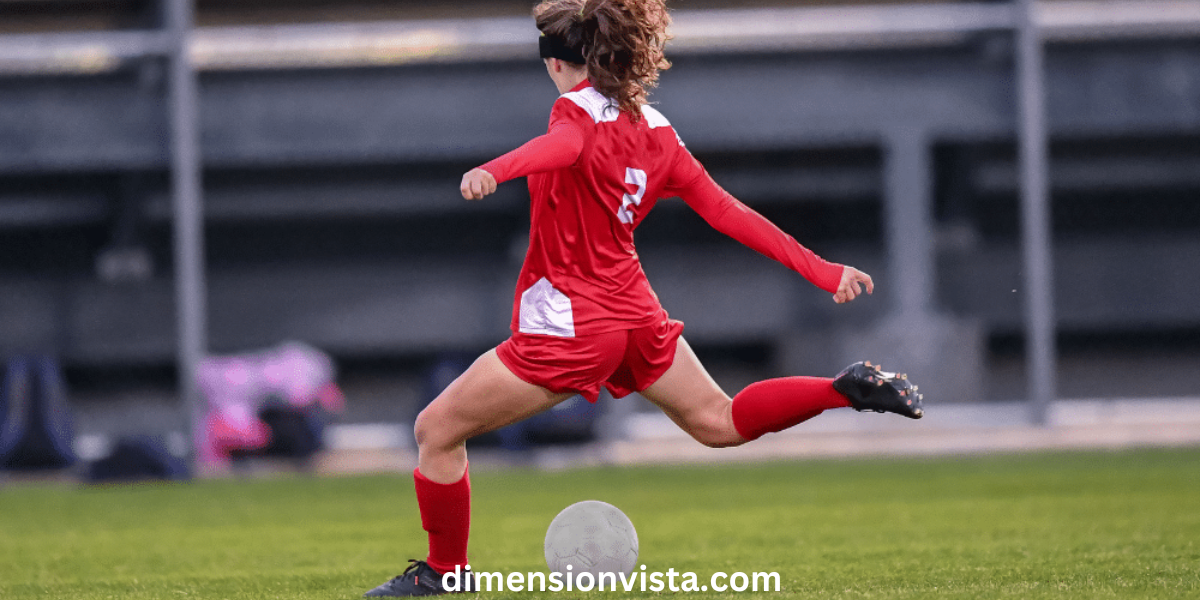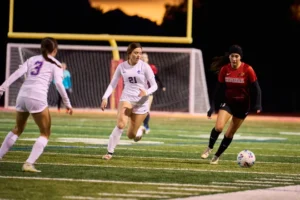High school soccer is one of the most exciting youth sports, combining fast-paced action, team spirit, and fierce competition. But for many parents, players, and new fans, one common question arises: how long does a high school soccer game last? Unlike professional or college soccer, high school matches have specific timing rules that vary slightly depending on the state, league, or governing body.
“A high school soccer game usually runs for 80 minutes, split into two halves of 40 minutes each, with a 10-minute break in between.”
In this comprehensive guide, we’ll break down the official duration of high school soccer games, explain how overtime and stoppage time are handled, and compare it with other levels of soccer. By the end of this article, you’ll have a complete understanding of what to expect on game day whether you’re watching from the stands or preparing to play on the field.
How Long Does a High School Soccer Game Last?
The Short Answer:
How Long does a high School soccer game Last 80 minutes, divided into two 40-minute halves with a 10-minute halftime break. However, there are several nuances depending on rules set by state athletic associations or governing bodies like the NFHS (National Federation of State High School Associations).
Official High School Soccer Game Duration
🕒 Standard Match Length:
- First Half: 40 minutes
- Halftime Break: 10 minutes
- Second Half: 40 minutes
- Total Regulation Time: 80 minutes
This format is used in most U.S. high school competitions and is regulated by the NFHS Soccer Rules Book.
🔍 Source: National Federation of State High School Associations (NFHS) – Official Soccer Rule Book
Are There Overtime Periods in High School Soccer?
Yes, but overtime is typically only played during postseason or playoff games, not during the regular season.
⏱ Overtime Rules (Varies by State or League):
- Overtime Periods: Two 10-minute halves
- Golden Goal Rule: Some states use this sudden-death rule; others do not.
- Penalty Kicks: If still tied after overtime, a penalty shootout decides the winner.
⚠️ Note: Regular-season games often end in a tie without extra time.
What About Stoppage Time or Injury Time?
Unlike professional soccer, high school soccer generally does not include added stoppage time. The game clock stops for major injuries, extended substitutions, or other delays.
This is a key difference:
- High School Soccer: Clock stops for significant interruptions.
- Professional Soccer: Referee adds stoppage time at the end of each half.
🎯 Tip: Coaches and players should watch the scoreboard closely there’s no hidden time!
State-by-State Variations
While the NFHS sets national standards, state associations may tweak timing rules. Here are a few examples:
| State | Regular Game Duration | Overtime Rule |
|---|---|---|
| California (CIF) | 2 x 40-minute halves | Yes (Postseason) |
| Texas (UIL) | 2 x 40-minute halves | Yes (Postseason) |
| Florida (FHSAA) | 2 x 40-minute halves | 2 x 10-min OT + Penalties |
Always consult your local state high school athletic association for the most accurate rules.
How High School Soccer Differs from Other Levels
| Level | Halves Duration | Total Time | Overtime Rules |
|---|---|---|---|
| High School | 2 x 40 min | 80 min | Yes, in playoffs |
| College (NCAA) | 2 x 45 min | 90 min | 2 x 10-min OT (Golden Goal) |
| Professional (FIFA) | 2 x 45 min | 90+ min | 30 min extra time + PKs |
| Youth (U12–U14) | 2 x 30–35 min | 60–70 min | Rarely used |
Common Questions About High School Soccer Game Length
❓ Why is the game shorter than professional matches?
High school athletes are still developing physically. The 80-minute format balances endurance with safety and allows for proper gameplay without overexertion.
❓ Are water breaks included?
Water breaks are not standard, but officials may allow them during extreme heat or based on local policies (especially in states like Arizona or Florida).
❓ Can the halves be shortened?
Yes. Referees or league rules may shorten halves due to:
- Lightning delays
- Poor field conditions
- Time constraints in tournaments
Game Day Example: Timeline of a Typical High School Soccer Match
Here’s what a typical schedule might look like for a 4:00 PM kickoff:
- 3:30 PM – Warm-ups Begin
- 4:00 PM – First Half (40 min)
- 4:40 PM – Halftime (10 min)
- 4:50 PM – Second Half (40 min)
- 5:30 PM – End of Regulation
- 5:35 PM – Overtime (if needed)
- 6:00 PM – Possible Penalty Shootout
🎥 Visual Tip: Consider adding a visual timeline infographic for mobile readers.
Helpful Tips for Coaches, Parents, and Players
✅ For Coaches:
- Plan substitutions around the 40-minute halves.
- Use halftime for key tactical adjustments.
- Review league overtime rules in advance.
✅ For Parents:
- Arrive early to watch warmups.
- Games rarely run longer than 90 minutes total.
- Bring water, sunscreen, and a seat cushion!
✅ For Players:
- Train with 40-minute halves in mind.
- Hydrate before and after matches.
- Stay focused there’s little room for error in short halves.
Real-World Example: High School Soccer Tournament in Action
During the 2024 state finals in Illinois, a boys’ soccer game remained tied 1-1 after 80 minutes. The teams then entered two 10-minute overtime periods. With no winner, the match went to a penalty shootout, where the winning team clinched the title 4-3.
This shows just how crucial it is to understand the structure and timing of high school games especially in championship settings.
Conclusion: Be Game-Day Ready
So, how long does a high school soccer game last? In most cases, it’s a fast and exciting 80-minute experience, with overtime and shootouts reserved for playoffs or championships. Whether you’re a player prepping for competition, a coach organizing your subs, or a parent cheering from the stands, knowing the game structure helps you stay informed and involved.
Takeaway checklist:
- ✅ 80 minutes total: Two 40-minute halves
- ✅ 10-minute halftime
- ✅ Overtime and shootouts in playoffs
- ✅ Clock stops for injuries, not stoppage time
Now that you’re equipped with all the facts, you’re ready to enjoy high school soccer with confidence and clarity!


